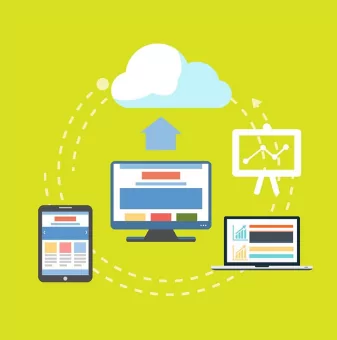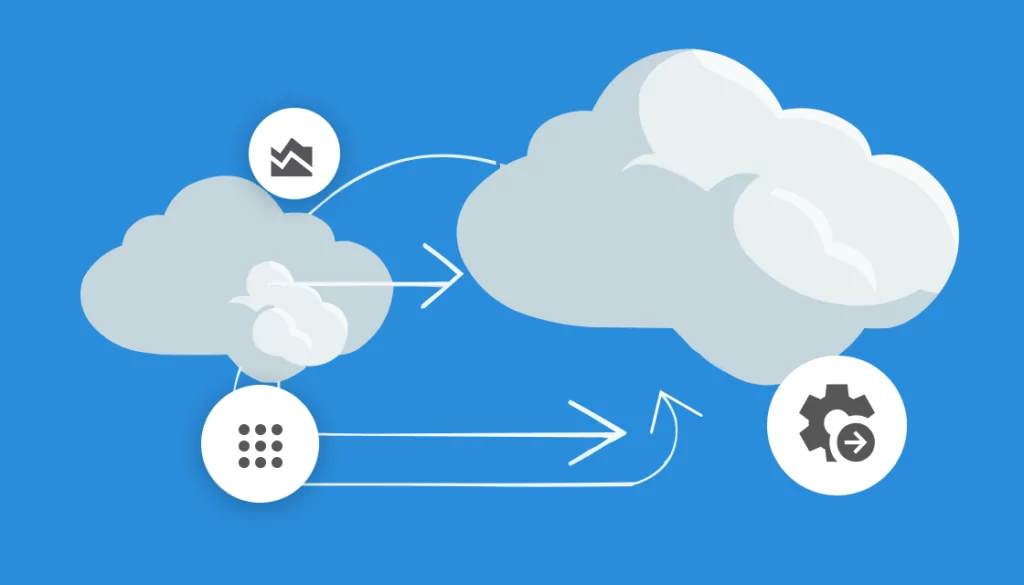What are the Top Hybrid Cloud Solutions
So, let’s dive right in. What is a hybrid cloud? At its simplest, a hybrid cloud is an IT architecture that spans multiple different environments, such as on-premises and public or private cloud solutions or multiple public commodity clouds.
According to Gartner, as flexibility and agility continue to be prized in the enterprise environment, more than three-quarters of medium-sized and large organizations will have shifted their business strategy to hybrid cloud by 2021. Here are the players making this adoption possible and what they do best. (For more information, see our Guide to Cloud Migration.)
Table of Contents
ToggleAWS Hybrid Cloud Solutions
AWS is the giant of all cloud solutions, with 33% of the entire cloud market. Their most robust cloud solution is AWS Outposts, an innovative way to keep your hybrid cloud environment consistent on-premises and on the cloud. Organizations can use the same operating models and AWS services locally in your data center. As AWS fully manages the environment, you can say goodbye to the complexity of new APIs, the need for third-party support and maintenance, or out-of-the-blue updates or feature changes that add friction to how you work. If you’re utilizing a hybrid cloud environment that is both on-premises and on AWS, Outposts is an excellent recommendation for your organizational needs.
Azure Cloud Solutions
Microsoft Azure’s hybrid cloud solutions include Azure Stack. The basics are a unified code base that can be used anywhere, whether on Azure cloud, on-premises, or in new and exciting cloud computing like the Edge. In particular, Azure Stack Hub is built perfectly for the edge, where computing and storage are pushed closer to where it’s needed, improving latency, speed, and cost. This is perfect for new cloud technology such as IoT, as it allows such real-time insight that you can get information from your IoT devices before sending it to the cloud. Azure Stack is also great for organizations embracing cloud migration, but some applications or data on-premises or on VMs locally need to be kept for security or business considerations.
Learn more in our detailed guide about cloud migration strategy or get started with cloud migration checklist

Lanir specializes in founding new tech companies for Enterprise Software: Assemble and nurture a great team, Early stage funding to growth late stage, One design partner to hundreds of enterprise customers, MVP to Enterprise grade product, Low level kernel engineering to AI/ML and BigData, One advisory board to a long list of shareholders and board members of the worlds largest VCs
Tips from the Expert
In my experience, here are tips that can help you better evaluate and leverage hybrid cloud solutions:
-
Assess data gravity
Prioritize solutions like AWS Outposts if high data must stay on-premises.
-
Optimize for edge needs
Use Azure Stack Hub for low-latency, edge computing.
-
Use dependency mapping tools
Tools like Faddom can prevent disruptions during migrations.
-
Ensure interoperability
Choose platforms like IBM Cloud Pak for broad compatibility.
-
Simplify management
Opt for centralized tools like HPE Greenlake for easier oversight.
IBM Cloud Solutions
The IBM cloud has just 5% of the market but is a famous enterprise choice for business cloud computing. In particular, IBM Cloud Pak I AI accelerates business use cases on the hybrid cloud. They use IBM Watson to leverage predictive analysis, automate processes that couldn’t be completed manually, optimize employee workloads, and better understand the end user. As the Cloud Pak solutions are built using the IBM Red Hat Platform, they can be launched on any hybrid cloud environment after being constructed once. Another benefit of Red Hat is that it makes using containerized environments and Kubernetes much easier, as IBM is the first cloud provider to integrate with OpenShift 4.
HPE Hybrid Cloud Solutions
Hybrid cloud solutions as a service? That sounds meta, but that’s precisely what Hewlett Packard offers, along with their HPE Greenlake solution. When a business starts with a hybrid cloud strategy, it often doesn’t know how to avoid wasted resources or overspending, so a managed service is precisely the right soft landing. HPE will allow you to create your perfect hybrid cloud environment, choose the services that suit your specific workloads, and enjoy a vendor-agnostic multi-cloud ecosystem. Pay for what you use and scale up as necessary, managing your private and public cloud environments from one centralized dashboard. Perfect for a multi-cloud deployment model. S
Understanding the Need for a Hybrid Cloud Solution
According to the Flexera State of Technology Spend Report 2020, the amount of money going into cloud projects is smaller than the amount companies spend on-premises. That means that despite the buzz around the cloud, on-premises deployments aren’t going anywhere anytime soon.
Whether you have a few critical systems on-prem, a full-blown hybrid cloud ecosystem, or a multi-cloud deployment model, we want to help you visualize it better.
Faddom Hybrid Cloud Solutions
The more environments you manage, the lower your visibility will be, and it is harder to see how everything acts upon each other. One change to one application could end up with a domino effect you don’t like and didn’t see coming. This challenge is Faddom’s sweet spot, offering hybrid dependency mapping that can show you an accurate, real-time view of even the most complex ecosystem. It can help you right-size your instances, accurately plan and implement a cloud migration strategy, and understand the cost behind your data transfers.








